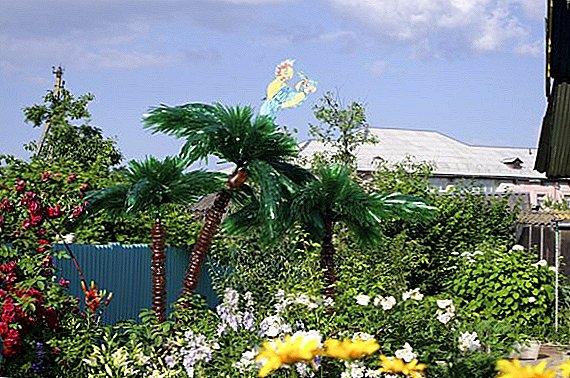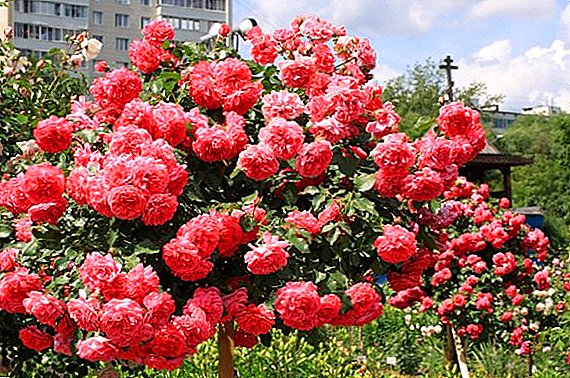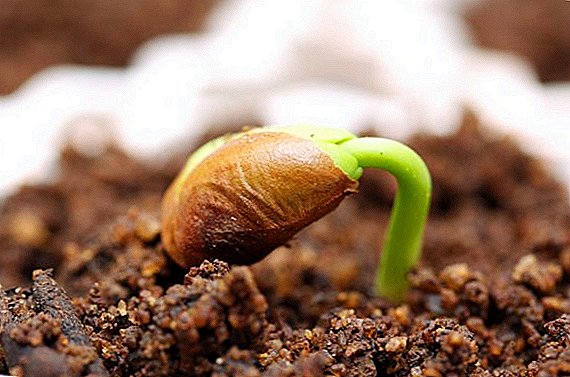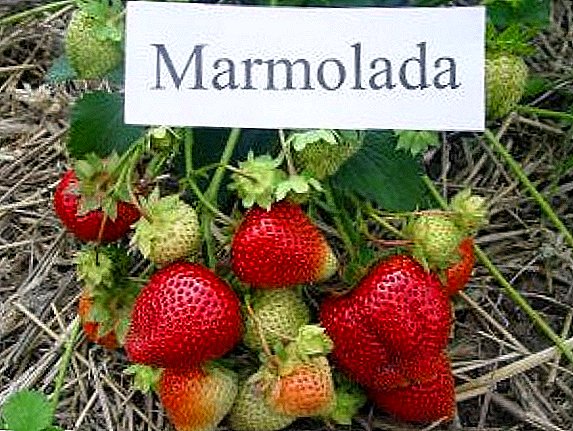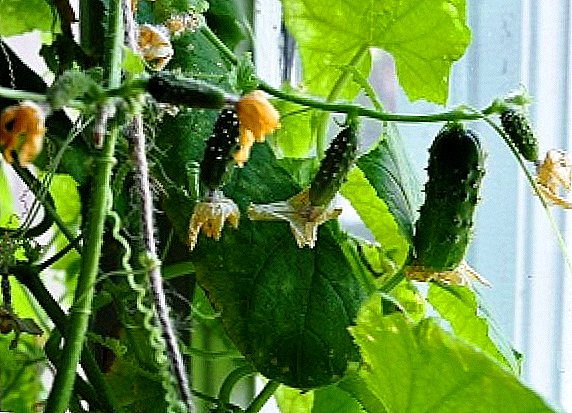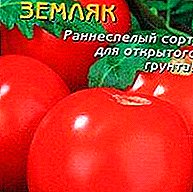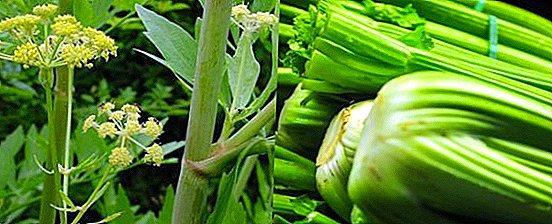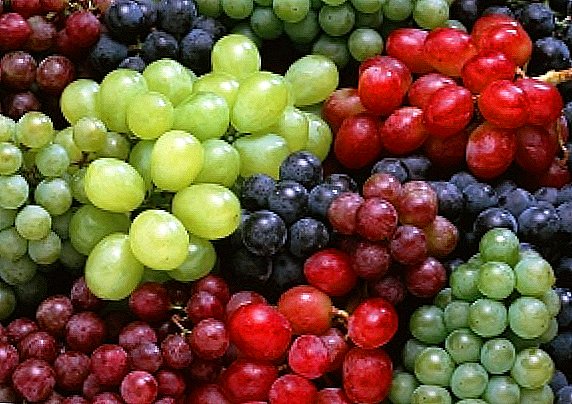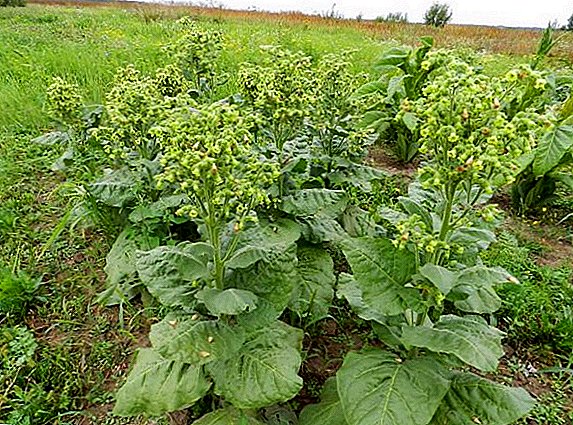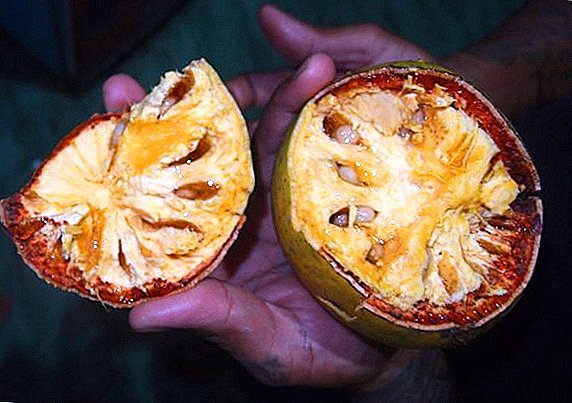 Baile, matum, stone (wooden) apple, Bengal quince, egle marmalade - All these are the names of one exotic fruit, which is almost impossible to meet in our natural form in our latitudes. But tourists who visited India, Thailand or Indonesia, could enjoy the unusual taste of this fruit. On the composition, benefits and options for using Bail read on.
Baile, matum, stone (wooden) apple, Bengal quince, egle marmalade - All these are the names of one exotic fruit, which is almost impossible to meet in our natural form in our latitudes. But tourists who visited India, Thailand or Indonesia, could enjoy the unusual taste of this fruit. On the composition, benefits and options for using Bail read on.
Botanical description
The plant belongs to slow-growing, deciduous subtropical trees. It has a short trunk covered with soft, thick bark. The Bengal quince crown is lush and wide. Young branches of the plant are completely covered with spines, and young leaves are painted in an unusual pinkish-purple color. Damaged bail branches produce a light and sticky juice.
Flowers of the plant are fragrant and collected in small clusters, located along the entire length of the branches. They consist of greenish twisted petals, painted on the outside in yellow.  The fruit is round, 5-20 cm (usually 10 cm) in diameter. It is covered with a yellowish shell, thin, but very solid, which is reflected in the name "stone apple". The core is divided into parts (from 8 to 20) of a triangular shape, filled with sweet pale orange flesh. In each part there is a seed.
The fruit is round, 5-20 cm (usually 10 cm) in diameter. It is covered with a yellowish shell, thin, but very solid, which is reflected in the name "stone apple". The core is divided into parts (from 8 to 20) of a triangular shape, filled with sweet pale orange flesh. In each part there is a seed.
Seeds of Bail are about one centimeter in size, they are covered with stiff hairs and have an elongated shape. Each seed is "hidden" in a small bag of mucus.
Find out what are the properties of dates, lychee, zizyphus, longan, persimmon, mango, pitahaya, avocado, papaya, guava, feijoa, kivano, rambutan.
Spread
Baile is most often found in the central and southern parts of India, it is this country that is considered its homeland. The Bengal quince is also cultivated in Indonesia, Thailand, the Philippine Islands and Ceylon. Baile is found even in the south of the USA.
In the wild, bail grows in Pakistan, Burma and Bangladesh. The stone apple feels good on dry clay soils with plenty of sunshine. 
Did you know? In India for this amazing fruit can even get married - in addition to the usual marriage. This ritual is called "Bella Bach" and allows the girl to avoid the fate of the widow and social contempt, which is mandatory for this category of women, in the future. As long as the shell of the Bengal quince, for which the girl was married, does not split, the woman is not considered a widow, even if her real husband has died.
Chemical composition
Bengal quince fruits contain phenolic resins, carotene, calcium, calcium and phosphorus, pectins, coumarins and vitamin C, ascorbic, tartaric, nicotinic acids and gum. All parts of the plant contain alkaloids and coumarins. A high content of tannins and essential oils was found in flowers and leaves.
Energy value and calorie
Baile can not be attributed to high-calorie foods: 100 g of its pulp contains only 48 calories. The energy value of the Bengal quince is 200 kilojoules.  100 g of fruit pulp contains:
100 g of fruit pulp contains:
- 2.6 g of proteins;
- 32 g of carbohydrates;
- 0.4 g fat;
- 62 g of water;
- 1.7 g of ash.
Beneficial features
Stone apple is effective in the fight against colds. A high concentration of biologically active substances allows the fruit to increase immunity and have a positive effect on the skin.
With a cold, you should pay attention to the properties of aloe, echinacea, propolis, linden, cumin, cornel, viburnum, cranberry, raspberry.Ripe fruit is a good laxative, and immature bail, thanks to antiseptics and phytoncides in its composition, on the contrary, helps to fight diarrhea.
Also, ripe fruits have a positive effect on the work of the nervous system and the gastrointestinal tract, and all this is due to the high content of vitamin B. 
How to eat fruit: taste
Marmalade egle to taste really resembles marmalade. The fruit is sweet and very delicate, with the scent of roses. But at the same time, there is a slightly astringent taste, which is especially pronounced in unripe fruits.
They eat stone apple, having previously cleared of a peel by means of a hammer or a hatchet. Without additional devices, bare hands, this will not succeed - the skin of the Bengal quince is very hard.
Important! Bengal quince - a fruit that is well suited for long-term storage. In the fridge, it will retain its freshness for three months, so they can stock up for future use.
Application
Stone apple is used not only as a tasty and juicy fruit in cooking. Useful properties of Bail are widely used in traditional Indian medicine, as well as cosmetology. In addition, it is a very multifunctional fruit - it can be useful even in construction and jewelry. 
In medicine
In the post-Soviet space, Bail is not used in medicine, but the traditional medicine of India and Tibet widely applies the healing properties of this fruit:
- Ayurvedic practice recommends stone apple as an antiseptic. Its astringent properties are used in diseases of the gastrointestinal tract.
- Bengal quince is effective in the treatment of skin diseases, as well as a tonic and tonic.
Catalpa, Zubrovka, aspen, euphorbia, shadberry, garlic, mulberry, yasnotka, scion, cardamom have antiseptic properties.The therapeutic effect of the Bengal quince on the body depends on the degree of its maturity:
- immature fruits contain a high concentration of tannins and bitters, so they are used to treat diarrhea and increase appetite;
- Mature fruits act differently - they have a laxative effect, they are also used as a remedy for scurvy. In addition, ripe Bengal quince cools well in hot tropical weather.
 BAA "Padma Basic", which includes stone apple, has high antioxidant properties and has a beneficial effect on the immune and cardiovascular systems.
BAA "Padma Basic", which includes stone apple, has high antioxidant properties and has a beneficial effect on the immune and cardiovascular systems.Did you know? The ancient Indian medical treatise "Charaka Samhita" refers bail to ten plants with the strongest possible healing effect.
In cosmetology
Psoralen contained in the fruit pulp, effective in combating various skin diseases. Pulp of pulp - an excellent tool for the preparation of various masks for the face, hands and body.
Plant extract as an active additive used in the preparation of shampoos, nourishing masks and creams. Fragrant extract from the flowers of the plant is used in the perfume industry.
In cooking
This exotic fruit is used in cooking as a familiar apple. Jams, preserves, smoothies and marmalade are made from it. It can be a pie filling or a component for a fruit salad. In addition, the stone apple can be eaten just fresh.  In Thailand, even leaves and seeds are used to make salads. Hindus use this fruit to make a drink called Sharbat. It is based on pureed bail pulp, to which sugar, ginger root, fennel seeds and milk are added.
In Thailand, even leaves and seeds are used to make salads. Hindus use this fruit to make a drink called Sharbat. It is based on pureed bail pulp, to which sugar, ginger root, fennel seeds and milk are added.
In addition, dried fruits are the basis for aromatic and healthy tea.
In religion
For Hindus, bail has a special meaning. This tree is considered sacred because its trifoliate leaves resemble the trident of Lord Shiva.
Did you know? In the Indian religious ceremonies, giving Shiva one sheet of Bengal quince is equal to one hundred thousand offerings of other flowers.Indians have a special respect for the fallen leaves of the bail, which they do not use to incite and maintain fire, in order not to anger Shiva.
At home
The green of the plant serves as food for livestock. Bengal quince pulp is not only tasty, but can also be used as a soap for bathing or washing.  The seed coat is used as a raw material for the preparation of glue, which is widely used in construction as an additive to cement mixtures and plaster. This glue is also used for attaching gems in jewelry.
The seed coat is used as a raw material for the preparation of glue, which is widely used in construction as an additive to cement mixtures and plaster. This glue is also used for attaching gems in jewelry.
The peel of unripe fruit is a good tanning agent, and the baile itself is a source of yellow dye for fabric.
Small household items are made from the freshly cut wood of the Bengal quince: scallops, handles for spoons and forks, and pistils.
Preparation of raw materials
Most often for medicinal purposes, harvested leaves, seeds and fruits of any stage of maturation:
- young (not yet hardened) fruits of a stone apple are torn off, cut into slices, extracted from them seeds and left to dry in the sun;
- the leaves of the plant are dried on the fabric in the unfolded form, this should not be done in the open sun, it is better to use partial shade for this purpose;
- a well-dried material is folded into bags of cloth or paper and left to be stored in a dark place with good ventilation, the shelf life of such raw materials is one year.

Harm and contraindications
Stone apple is contraindicated for people with individual intolerance to this fruit. Also, this exotic fruit should not be included in your diet for children under six years of age, pregnant women and women during lactation.
How to brew tea
Bail tea is made from dried fruit slices. On a regular teapot should take 2-3 slices and pour boiling water over them. Infuse this drink for at least half an hour. Also, tea from the fruits of Bengal quince can be cooked in a saucepan: dried slices are poured with water and boiled for several minutes. When the tea has cooled slightly, you can add lemon and honey to it.
Learn how to brew willow-tea, raspberry leaves, cranberries, currants, sea buckthorn, cherries, blueberries, hibiscus, mint, lemon balm, chamomile, almond leaf, lemongrass, thyme.The secret of this tea is in its brewing time. If the drink from the usual tea leaves is ready in a couple of minutes, then the stone apple tea should be infused as long as possible.
 The easiest and fastest brewing option is in a glass or cup. In this case, one slice of Bail filled with boiling water is enough. Tea is infused for at least half an hour, after which you can add sugar or honey to taste.
The easiest and fastest brewing option is in a glass or cup. In this case, one slice of Bail filled with boiling water is enough. Tea is infused for at least half an hour, after which you can add sugar or honey to taste.Important! Tea from Bail has the ability to remove nicotine from the lungs, so it is extremely useful for smokers.You can consume this tea in unlimited quantities. Harm to the body, he will not bring.
Although most of us are not available for daily use of fresh bail, this fruit should be included in your diet as a tea or a component of dietary supplements. As we have seen, the Bengal quince is useful and has almost no contraindications, allowing you to take the best from nature.


